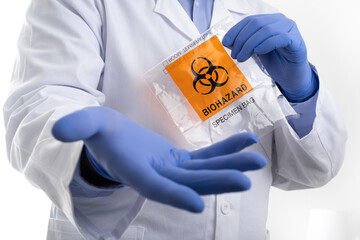Official data has revealed that the United States “suffers” a “startlingly high” number of viral lab leaks at its top virus labs. Every year, more than 600 releases of “controlled” pathogens (which may include anthrax, tuberculosis, and Ebola) were recorded in the U.S. over the eight years to 2022, equivalent to 70 to 100 releases.
According to a report by The Daily Mail UK, at least two U.S. workers were infected after the ‘release events’ over the last eight years — including the crippling mosquito-borne virus Chikungunya and the bacterial infection Q fever — although no deaths were reported.
Many of the incidents were caused by scientists spilling the contents of test tubes, not wearing safety equipment correctly, and suffering bites and scratches from infected animals. All of the incidents ran the risk of diseases being accidentally released into the community where the pathogens could start the next pandemic.
In some cases, diseases were released from labs because of equipment failures or via poor practices, such as emptying blood from infected monkeys down plug holes.-The Daily Mail UK
Top US Official Says ‘Growing Body Of Evidence’ Shows COVID-19 Leaked From Chinese Lab
Dr. Richard Ebright, a microbiologist at Rutgers University in New Jersey, said the data showed the “startlingly high frequency” of lab accidents in the US. He told DailyMail.com: “It also shows the inadequacy of US-Government oversight of biosafety and the lack of public transparency. This data “will be eye-opening to anyone not in the field,” he said.
A spokeswoman for the Government Accountability Office in Washington D.C., which has been campaigning on this issue for years, warned safety lapses in laboratories “continued to pose a serious threat to humans.” She told DailyMail.com: “We reported and testified before Congress in 2018 that safety lapses continue to occur at laboratories in the United States that conduct research on hazardous pathogens – such as the Ebola virus and the bacteria that causes anthrax. These pose a serious risk to human, animal, and plant health.”
Read the full article here




